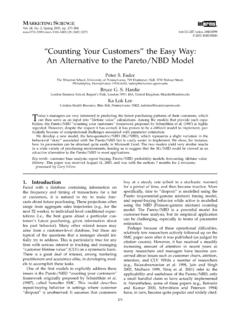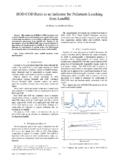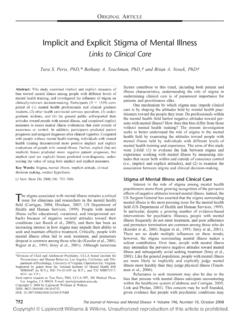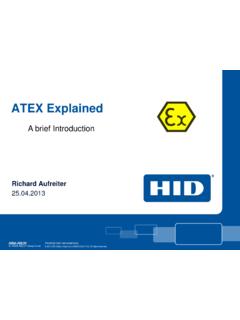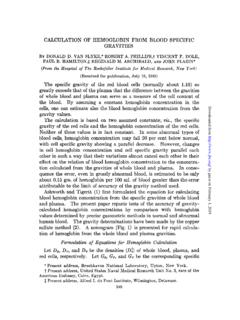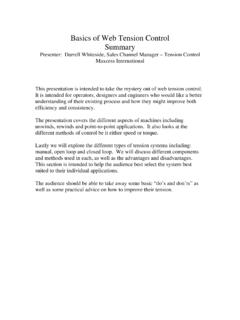Transcription of reviews - Center for Early literacy Learning : CELL
1 Center for Early literacy Learning reviews 2012 Volume 5 Number 2. Children's Story Retelling as a literacy and Language Enhancement Strategy Carl J. Dunst Andrew Simkus Deborah W. Hamby The effects of children's story retelling on Early literacy and language development was examined in a meta-analysis of 11 studies including 687 toddlers and preschoolers. Results indicated that children's story retelling influenced both story-related comprehension and expressive vocabulary as well as nonstory-related receptive language and Early literacy development. Findings also showed that the use of the characteristics that experts consider the important features of retelling practices was associated with positive child outcomes.
2 Implications for practice are described. Engaging young children in retelling stories read to Search Strategy them by parents or teachers is a strategy that is often used to promote story-related comprehension and expressive Studies were located using retelling, story retell*, pretend vocabulary ( , Gambrell & Dromsky, 2000; Geva & Ol- reading, retold story, child retell, child story retell AND infant, son, 1983; Soundy, 1993). When used with toddlers and infancy, toddler, preschool, kindergarten, neonat* as search preschoolers, a child or group of children is asked to retell, terms. Both controlled-vocabulary and natural-language rehearse, or recall different parts of a story read to them by searches were conducted (Isbell, 2002; Koskinen et al.)
3 , 1988;. adults or older children (Koskinen, Gambrell, Kapinus, & Lucas & Cutspec, 2007). Heathington, 1988). According to Isbell (2002), Retelling Psychological Abstracts (PsycINFO), Education Re- stories encourages children to use their imagination, expand source Information Center (ERIC), Medline, Academic their ideas, and create visual images as they transfer the plot Search Premier, Education Research Complete, and CI- [of the story] to new settings, including different characters NAHL were searched. These were supplemented by Google or new voices (p. 28). Scholar, Scirus, Ingenta, JStor, and Socindex searches, as well A retelling episode typically includes a teacher or par- as a search of an EndNote Library maintained by our Insti- ent scaffolding child engagement in storybook reading.
4 This tute. Hand searches of the reference sections of all retrieved often includes asking open-ended questions, asking a child journal articles, book chapters, books, dissertations, and un- to make predictions, and engaging a child in verbal elabora- published papers were also examined to locate additional tions. Story retelling is characterized by actively involving a studies. Studies were included if child retelling was used as child in the reading episode, retelling the story to the child, part of a storybook reading intervention and either pretest- promoting additional child elaborations and expansions, and post test changes or between group comparisons were made asking the child to retell the story (in his or her own words) between inventions and nonintervention group participants (Cliatt & Shaw, 1988).
5 And the largest majority of participants in a study were 72. The purpose of the meta-analysis reported in this CELL- months of age or younger. review was to investigate the effectiveness of children's story retelling on the children's story-related comprehension and expressive vocabulary. The goal was to identify the character- CELL reviews are publications of the Center for Early Lit- eracy Learning (CELL) funded by the Department istics of and conditions under which children's story retell- of Education, Office of Special Education Programs ing has the largest sizes of effect on the study outcomes, and (Grant #H326B060010). CELL is a collaboration among especially comprehension and expressive vocabulary consis- the Orelena Hawks Puckett Institute, the American In- tent with the hypothesis that children's story retelling should stitutes for Research, and the PACER Center .
6 Copy- right 2012 Orelena Hawks Puckett Institute. All rights influence these particular outcomes (Gambrell & Dromsky, reserved. 2000; Isbell, 2002; Koskinen et al., 1988). Search Results employed picture books or storybooks. The largest majority of child retellings were done on an individual basis (N=6) or Eleven studies were located that included 13 samples of both an individual and group basis (N=3). The children were toddlers and preschoolers. The studies included 687 children. engaged in retelling stories between one (N=2) and four or Appendix A shows the background characteristics of the more times (N=7). The storybook-reading sessions lasted be- participants. The children's average mean age was 57 months tween 15 and 45 minutes and the interventions lasted from 1.
7 (SD =11, Range = 35-93). The children were equally divided to 36 weeks. between males (51%) and females (49%). Four of the sam- The storybook-reading episodes by the adults and the ples consisted of typically developing children, eight samples child story retellings were examined in each study to iden- consisted of children considered at risk for poor outcomes, tify the characteristics of the interventions. Table 1 shows and one sample consisted of children with intellectual dis- the characteristics that were coded for both the adults and abilities. children. Appendix C shows which studies included the dif- Selected characteristics of the storybook reading ses- ferent adult characteristics and Appendix D shows which sions are shown in Appendix B.
8 All but one intervention studies included the child's retelling characteristics. A char- Table 1. Definitions of the Characteristics of the Retelling Intervention Characteristic Definition Adult Reading Story introduction Reader introduces the story by showing the cover of the book and prompts class to predict what the story may be about before beginning to read it. Repeated readings The oral reading of the same book multiple times from a caregiver to the child. Story review Reader presents an oral review of the characters and events in the story. Relatedness Reader relates a picture or event in story to child's personal experience. Prompts child responses Reader asks child to make comments and ask questions during the reading or reader pauses during reading episode in order to prompt the child to fill in the missing information.
9 Open-ended questions Reader asks the child open-ended questions about the book during the reading episode or the reader asks questions that the child already knows answers to in order to get the child to respond or make comments. Asks for predictions Before reading the story, the reader asks child to make a prediction of what the story is about based upon what the child sees on the cover of the book. Manipulatives Reader uses props or toys relevant to the book that help engage the child in the reading episode. Visual aid Reader tells story utilizing a visual aid such as the book illustrations or separate picture sequencing cards. Child's Retelling Adult prompting Reader encourages child to go further with their retelling using phrases such as What happened next?
10 Or And then what? Reader assists child with their retelling by helping the child focus on structural elements, encouraging the child to explain characters, events, and plots. Elaborations Reader uses a conversational approach to help the child reconstruct the story and relate parts of the story to the child's own experiences. Reader uses specific questions to guide the child's attention to story structure. Book access Child is allowed to hold and use the book for cues during the retelling. Dramatization Child is asked to role play or act out parts of the story while the story is being read. Visual Aid Reader provides child with picture sequencing cards or pictures in the book that illustrate the events in the story to assist in child's retelling.








